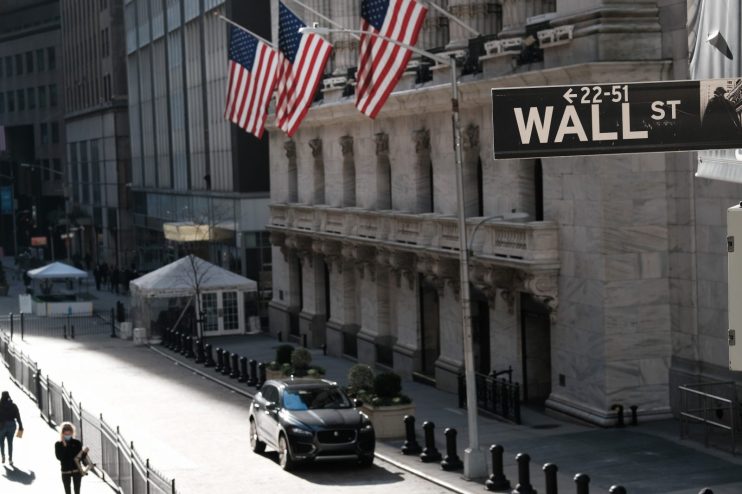Deposits in focus as US banks line up to report amid banking volatility

The largest banks on Wall Street will start reporting their first quarter earnings later this week with investors set to pay very close attention to banks’ deposits.
So far this year, huge amounts of money have flowed into higher-yielding money market funds from bank deposits.
This picked up in March after the collapse of Silicon Valley Bank (SVB) raised questions about the security of deposits in smaller banks. Investors put $367bn into US money market funds in March.
However, analysts suggested that the largest lenders could emerge with their deposits mostly intact as worried depositors from regional banks park their money in the Wall Street giants.
Citi, Wells Fargo and JP Morgan will announce first quarter results on Friday. The following Tuesday Goldman Sachs and Bank of America will release their quarterly report before Morgan Stanley complete the set on Wednesday.
Analysts at JP Morgan thought US bank deposits should hold up “relatively better” as they will benefit from inflows from their smaller rivals.
Bloomberg Intelligence’s Alison Williams said JP Morgan, Bank of America and Wells Fargo will also be “relative winners in the deposits flight to quality”.
Looking at the results more broadly, however, analysts are divided about what to expect.
Rising interest rates have been a boon for lenders around the world, but now banks are under increasing pressure to offer higher interest rates to their customers even as the Fed approaches the end of its rate-hiking campaign.
JP Morgan has warned that US banks’ first quarter earnings are likely to be “mixed”. They expect net interest income to slip by around two per cent quarter on quarter as lenders are forced to pass on more interest rates to customers.
Williams also suggested that most US banks were likely to see “lower net interest income and margins from the last quarter as the cost of that funding is generally rising.”
Analysts at US financial services firm Baird, however, were more optimistic, arguing that the results were likely to be “solid” and that talk about potential weaknesses or shortcomings in major US banks was being “overdone”.
Results will be “generally OK” with stable net interest income and “flattish fees”, Baird argued, suggesting that the figures would highlight the banks’ strong balance sheets.
Investment banking is also expected to remain subdued in the first quarter, continuing the trend from a very poor 2022.
Last year Goldman Sachs reported a 48 per cent fall in investment banking revenue across the year while Morgan Stanley’s investment banking revenue fell 49 per cent. However, markets rewarded Morgan Stanley for its more successful diversification strategy which helped its overall profit beat market expectations.
Analysts at JP Morgan argued that investment banking performance across the sector will continue to be “very weak”.
Williams agreed. “Investment banking fees will remain pressured… as IPO and M&A activity remains scarce. On a year-over-year basis, capital markets focused Morgan Stanley and Goldman Sachs will be weaker against a solid year-ago quarter,” she said.
The impact of the mini-meltdown in March will likely have little effect on most figures reported this week and next, but many analysts suggested it pointed to a bleak future for the sector.
Analysts at UBS said the March crisis will have “reverberating effects across the industry,” pointing out that many regional banks are now considered systemic, and, as a result, banks are likely to face much tighter regulation.
“The industry will need more capital (even the money centres, with Basel IV looming), and more liquidity,” the UBS analysts said.
JP Morgan said banks faced “a litany of concerns” in the medium to long term, including the threat of recession, increased regulatory requirements and the impact of high inflation.